Intergalacticnerd - Space N Shit

More Posts from Intergalacticnerd and Others

A photo of Saturn. Took by Cassini with COISS on May 30, 2008 at 11:52:37. Detail page on OPUS database.
7 Facts That Will Make You Feel Very Small
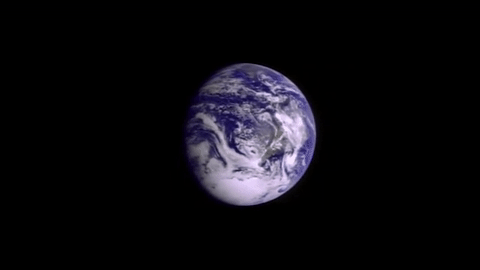
Earth, our home planet, is the fifth largest planet in our solar system and the only planet we know of where life exists. Even though Earth seems extremely large to us, it is actually a tiny spec in the vast expanse of the universe. Here are 7 space facts that will make you feel very small.

1. Our sun is one of at least 100 BILLION stars, just in the Milky Way. Scientists calculate that there are at least 100 billion galaxies in the observable universe, each one brimming with stars. There are more stars than grains of sand on all of Earth’s beaches combined.
In 1995, the first planet beyond our solar system was discovered. Now, thousands of planets orbiting sun-like stars have been discovered, also known as exoplanets.

2. The Milky Way is a huge city of stars, so big that even at the speed of light (which is fast!), it would take 100,000 years to travel across it.

3. Roughly 70% of the universe is made of dark energy. Dark matter makes up about 25%. The rest — everything on Earth, everything ever observed with all of our instruments, all normal matter adds up to less than 5% of the universe.

4. If the sun were as tall as a typical front door, Earth would be the size of a nickel.

5. The sun accounts for almost all of the mass in our solar system. Leaving .2% for all the planets and everything else.

6. Edwin Hubble discovered that the Universe is expanding and that at one point in time (14 billion years ago) the universe was all collected in just one point of space.

7. Four American spacecraft are headed out of our solar system to what scientists call interstellar space. Voyager 1 is the farthest out — more than 11 billion miles from our sun. It was the first manmade object to leave our solar system. Voyager 2, is speeding along at more than 39,000 mph, but will still take more than 296,000 years to pass Sirius, the brightest star in our night sky.
Feeling small yet? Here’s a tool that will show you just how tiny we are compared to everything else out there: http://imagine.gsfc.nasa.gov/features/cosmic/earth.html
Make sure to follow us on Tumblr for your regular dose of space: http://nasa.tumblr.com
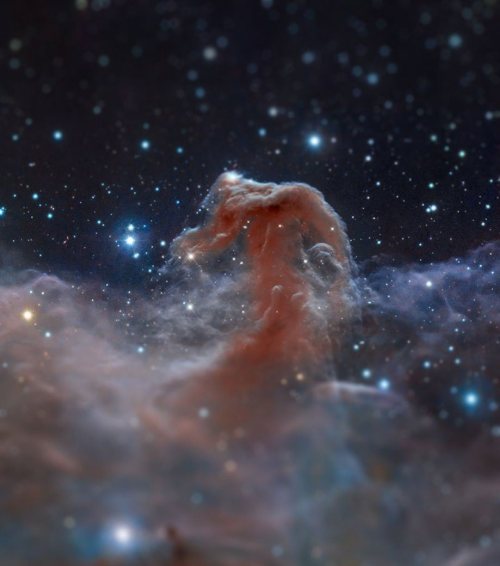
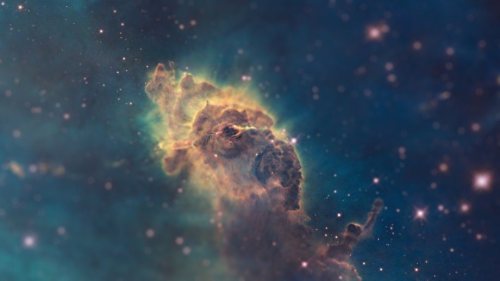
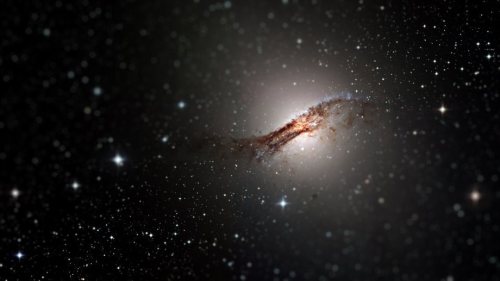
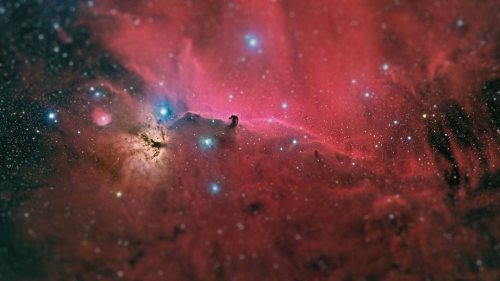
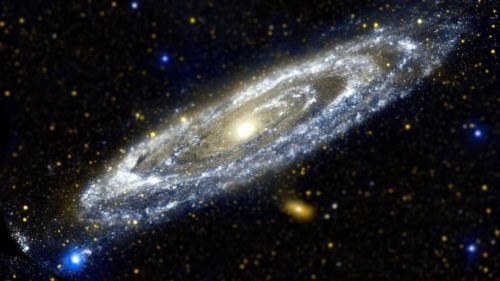
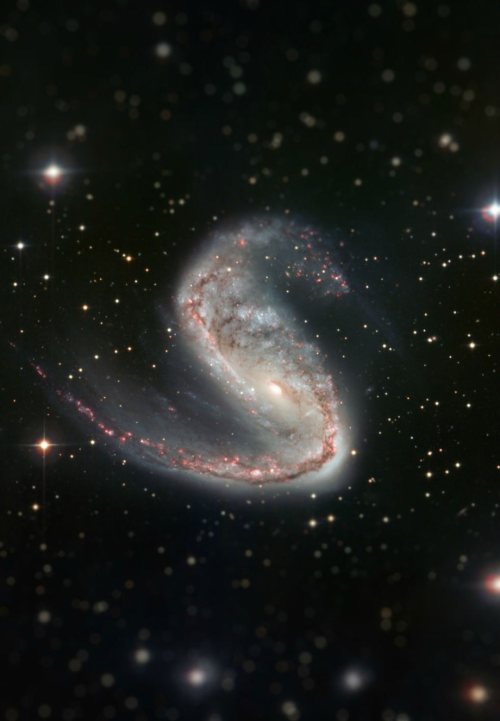
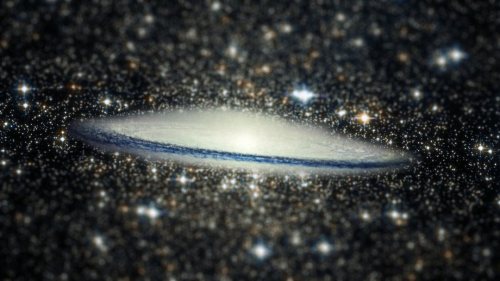
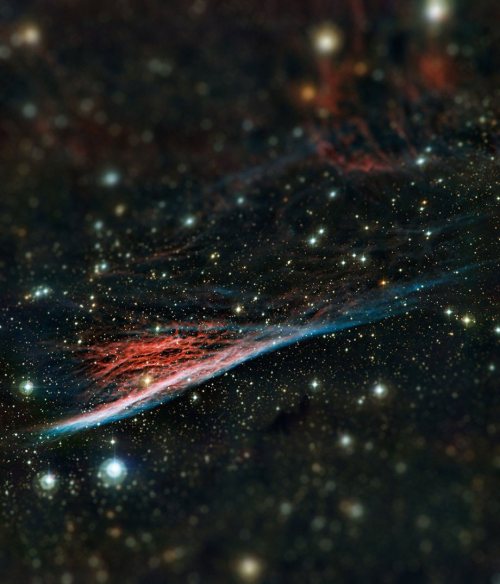
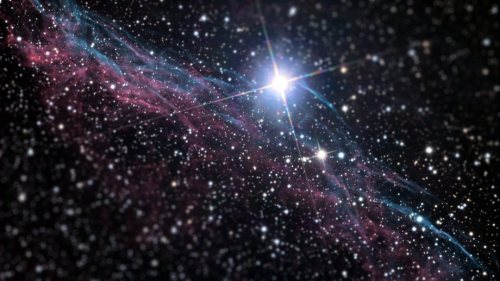
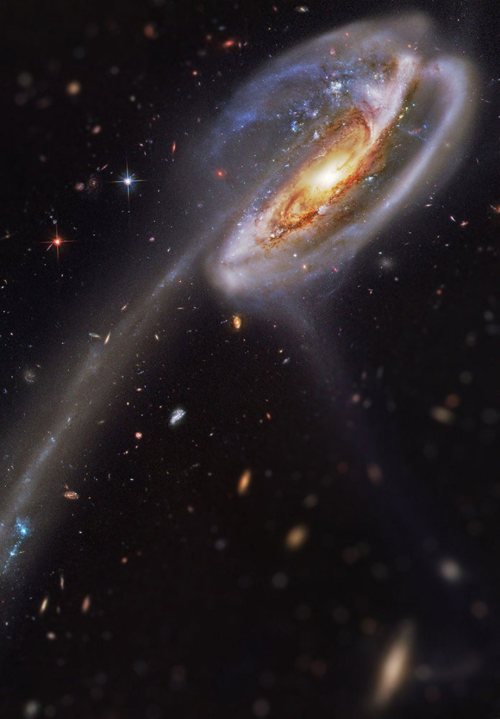
Tilt Shift filters applied to Hubble Space Telescope photos.
Tilt Shift filters make the foreground and background of images more blurred, changing the depth of field of these images.
(x)
[Click for more interesting science facts and gifs]

Using the advanced adaptive optics system on the Gemini South telescope, astronomers have imaged a beautiful stellar jewel-box – a tightly packed cluster of stars that is one of the few places in our galaxy where astronomers think stars can actually collide. Stellar collisions are important because they can provide the key to understand the origin of exotic objects that cannot be interpreted in terms of the passive evolution of single stars. read more here credit: Gemini Observatory/AURA




This is the coolest outer space animation ever. It shows the Crab Supernova explosion, happened in 1054, and its evolution into the remnant it is now - called the Crab Nebula. Basically a thousand years speeded up into less than a minute.
Modern understanding that the Crab Nebula was created by a supernova, an explosion of a massive supergiant star, dates to 1921 when Carl Otto Lampland announced he had seen changes in its structure. This eventually led to the conclusion that the creation of the Crab Nebula corresponds to the bright SN 1054 supernova recorded by Chinese astronomers in AD 1054. There is also a 13th-century Japanese reference to an appearance of a new or “guest” star in Meigetsuki. It was then so bright it was visible during the daytime for 23 days.
animation credit: ESA/Hubble (M. Kornmesser & L. L. Christensen)

أو كمَا يقُول أفلاطونٍ: “كُلّ الأشياءِ الجّميلة صعْبَة”.
Dust, stars, and cosmic rays swirling around Comet 67P/Churyumov–Gerasimenko, captured by the Rosetta probe. (Source)

NASA just released the most detailed photo of space ever taken
The picture of the Andromeda galaxy, the nearest spiral galaxy to our own, is comprised of a mind-boggling 1.5 billion pixels and was snapped from 2.5 million light years away by the powerful Hubble Space Telescope.
See it in all its glory
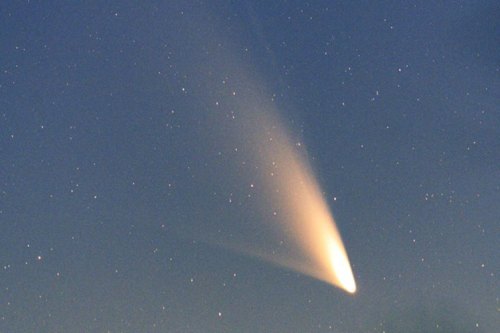
Comet Panstarrs – Seen from Queenstown, New Zealand (March 2, 2013)
Credit – Minoru Yoneto

Black Holes are not so Black (Part 3) - Gravitational Waves
The existence of Gravitational Waves have been confirmed. But you probably have heard that. In this post, we will break down this profound discovery into comprehend-able chunks.
This is going to be a amazing journey. Ready ?
Redefining Gravity
When we usually talk of Gravitation we are bound to think like Newton, where objects are assumed to exerting a force upon each other.
Like imaginary arrows of force in space. But this picture, although good for high school crumbled, with the advent of Einstein’s theory of Relativity.

What is the Space-Time Fabric?
Think of space-time fabric as an actual cloth of fabric. ( An analogy )
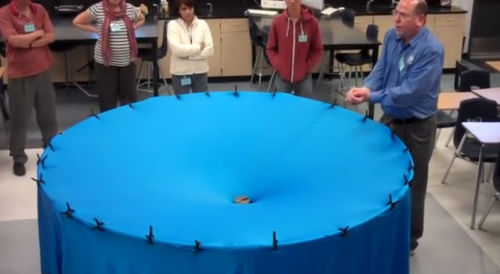
When you place an object on the fabric, the cloth curves. This is exactly what happens in the solar system as well.

The sun with such a huge mass bends the space-time fabric. And the earth and all the planets are kept in orbit by following this curvature that has been made by the sun.
Attributing to the various masses of objects, the way they bend this fabric also varies.
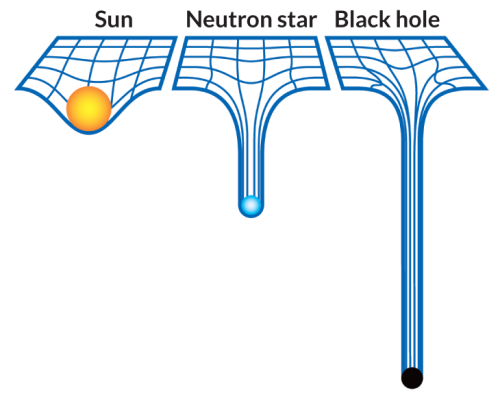
What are Gravitational Waves?
If you drop an object in a medium such as water, they produce ripples that propagate as waves through the medium.

Similarly, Gravitational waves are ripples in space-time fabric produced when you drag heavy objects through space time.
And the nature of these waves is that they don’t require a medium to propagate.
How do you make one?
Everything with mass/energy can create these waves.

Source
Two persons dancing around each other in space too can create gravitational waves. But the waves would be extremely faint.
You need something big and massive accelerating through space-time in order to even detect them.

And orbiting binary stars/black holes are valuable in this retrospect.
How can you detect them?
Let’s turn to the problem to detecting them assuming you do find binary stars/black-holes in the wondrous space to suite your needs.
Well, for starters you cannot use rocks/ rulers to measure them because as the space expands and contracts, so do the rocks. ( the distances will remain same in both the cases )

Here’s where the high school fact that the speed of Light is a constant no matter what plays an important and pivotal role.
If the space expands, the time taken for light to reach from A to B would be longer. And if it contracts, the time taken for it to reach from A to B would be smaller.

PC: PHDComics
By allowing the light waves from the contraction and expansion to interfere with each other, such as done in any interferometry experiment we can detect the expansion or contraction. Voila!
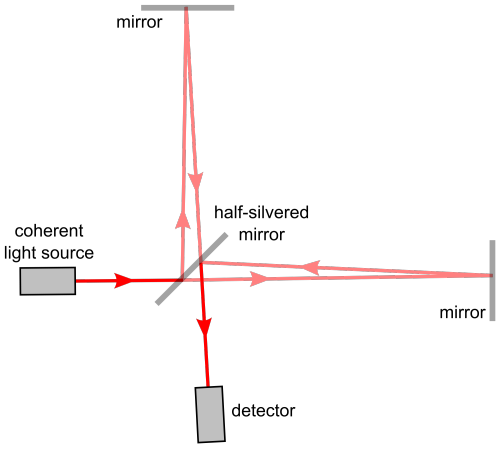
And this is exactly what they did! ( on a macroscopic level ) at LIGO (Laser Interferometer Gravitational-Wave Observatory)
14 September 2015

Two Black Holes with masses of 29 and 36 solar masses merged together some 1.3 Billion light years away.
Two Black Holes colliding is the header animation of the ‘Black Holes are not so Black Series’, in case if you haven’t noticed.

The merger of these two black holes results in the emission of energy equivalent to 3 solar masses as Gravitational Waves.
This signal was seen by both LIGO detectors, in Livingston and Hanford, with a time difference of 7 milliseconds.
And with the measurement of this time difference, physicists have pronounced the existence of Gravitational Waves.
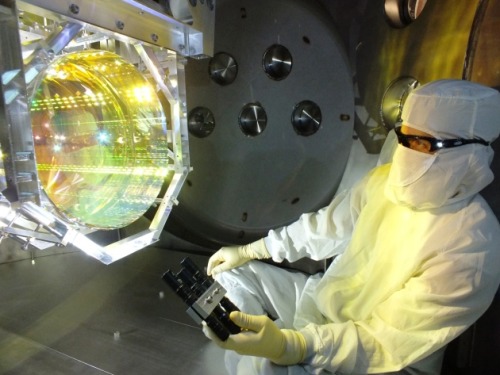
Source
All this is most certainly easily said than done and requires meticulous and extensive research, not to mention highly sensitive instruments.
Had they not have measured this time difference, we might have had to wait for the merger for more massive black holes to collide and maybe even build more sensitive instruments to detect these waves.
And Einstein predicted this a 100 years back!
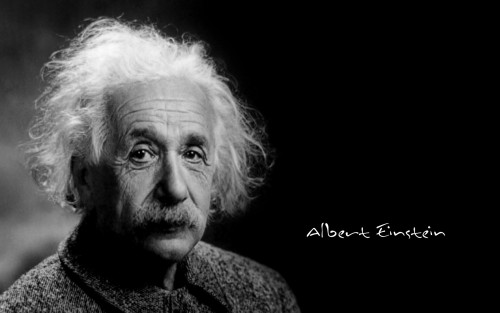
Mind Blown!
Note: Hope you are able to understand and appreciate the profundity of the discovery done by mankind.
** All animations used here are merely for Educational purposes. If you have any issues, please write to us at : 153armstrong@gmail.com
-
 jabz-93 liked this · 1 week ago
jabz-93 liked this · 1 week ago -
 this-ishappiness reblogged this · 2 weeks ago
this-ishappiness reblogged this · 2 weeks ago -
 this-ishappiness liked this · 2 weeks ago
this-ishappiness liked this · 2 weeks ago -
 sleep1essnights reblogged this · 2 weeks ago
sleep1essnights reblogged this · 2 weeks ago -
 lunasdiiary liked this · 2 weeks ago
lunasdiiary liked this · 2 weeks ago -
 fullofnightnoises reblogged this · 2 weeks ago
fullofnightnoises reblogged this · 2 weeks ago -
 brunobrza liked this · 2 weeks ago
brunobrza liked this · 2 weeks ago -
 canser-be-r-o reblogged this · 2 weeks ago
canser-be-r-o reblogged this · 2 weeks ago -
 twistedsolitude reblogged this · 2 weeks ago
twistedsolitude reblogged this · 2 weeks ago -
 468h4c liked this · 2 weeks ago
468h4c liked this · 2 weeks ago -
 embracedflaws reblogged this · 2 weeks ago
embracedflaws reblogged this · 2 weeks ago -
 sufiblackmamba reblogged this · 2 weeks ago
sufiblackmamba reblogged this · 2 weeks ago -
 sufiblackmamba liked this · 2 weeks ago
sufiblackmamba liked this · 2 weeks ago -
 nikpik15 liked this · 2 weeks ago
nikpik15 liked this · 2 weeks ago -
 mess-ines reblogged this · 2 weeks ago
mess-ines reblogged this · 2 weeks ago -
 relax-mode reblogged this · 2 weeks ago
relax-mode reblogged this · 2 weeks ago -
 kafaminguzelligi reblogged this · 2 weeks ago
kafaminguzelligi reblogged this · 2 weeks ago -
 yelenasvestpockets liked this · 2 weeks ago
yelenasvestpockets liked this · 2 weeks ago -
 peabraininavat reblogged this · 2 weeks ago
peabraininavat reblogged this · 2 weeks ago -
 purpledazzlefruit liked this · 2 weeks ago
purpledazzlefruit liked this · 2 weeks ago -
 xlucyintheskyy liked this · 2 weeks ago
xlucyintheskyy liked this · 2 weeks ago -
 treasuredpleasures reblogged this · 2 weeks ago
treasuredpleasures reblogged this · 2 weeks ago -
 shannoneichorn liked this · 2 weeks ago
shannoneichorn liked this · 2 weeks ago -
 my-mind-body-and-soul reblogged this · 3 weeks ago
my-mind-body-and-soul reblogged this · 3 weeks ago -
 ohuwantsomeofthishotfire reblogged this · 3 weeks ago
ohuwantsomeofthishotfire reblogged this · 3 weeks ago -
 itshaslove reblogged this · 3 weeks ago
itshaslove reblogged this · 3 weeks ago -
 slavic-empress liked this · 3 weeks ago
slavic-empress liked this · 3 weeks ago -
 barmulh reblogged this · 3 weeks ago
barmulh reblogged this · 3 weeks ago -
 glittergoldmoney reblogged this · 3 weeks ago
glittergoldmoney reblogged this · 3 weeks ago -
 dopecaliqueen liked this · 3 weeks ago
dopecaliqueen liked this · 3 weeks ago -
 bigdaddyangelica liked this · 3 weeks ago
bigdaddyangelica liked this · 3 weeks ago -
 aljouharaa reblogged this · 3 weeks ago
aljouharaa reblogged this · 3 weeks ago -
 aljouharaa liked this · 3 weeks ago
aljouharaa liked this · 3 weeks ago -
 eryoufah reblogged this · 3 weeks ago
eryoufah reblogged this · 3 weeks ago -
 prettyblacktaurus reblogged this · 3 weeks ago
prettyblacktaurus reblogged this · 3 weeks ago -
 mademoiselleteetee reblogged this · 3 weeks ago
mademoiselleteetee reblogged this · 3 weeks ago -
 el-hijo-desobediente reblogged this · 3 weeks ago
el-hijo-desobediente reblogged this · 3 weeks ago -
 thankmelaterx3 liked this · 3 weeks ago
thankmelaterx3 liked this · 3 weeks ago -
 thankmelaterx3 reblogged this · 3 weeks ago
thankmelaterx3 reblogged this · 3 weeks ago -
 cultural-derealization liked this · 3 weeks ago
cultural-derealization liked this · 3 weeks ago -
 lemme-holla-at-you reblogged this · 3 weeks ago
lemme-holla-at-you reblogged this · 3 weeks ago -
 aurora-bore-aura reblogged this · 3 weeks ago
aurora-bore-aura reblogged this · 3 weeks ago -
 aurora-bore-aura liked this · 3 weeks ago
aurora-bore-aura liked this · 3 weeks ago -
 luniimunii27 liked this · 3 weeks ago
luniimunii27 liked this · 3 weeks ago -
 zelianthos-capercaillie liked this · 3 weeks ago
zelianthos-capercaillie liked this · 3 weeks ago -
 official--superman reblogged this · 3 weeks ago
official--superman reblogged this · 3 weeks ago -
 amoremvao liked this · 3 weeks ago
amoremvao liked this · 3 weeks ago -
 aounce liked this · 3 weeks ago
aounce liked this · 3 weeks ago
"Astronomy compels the soul to look upwards and leads us from this world to another." - Plato
147 posts